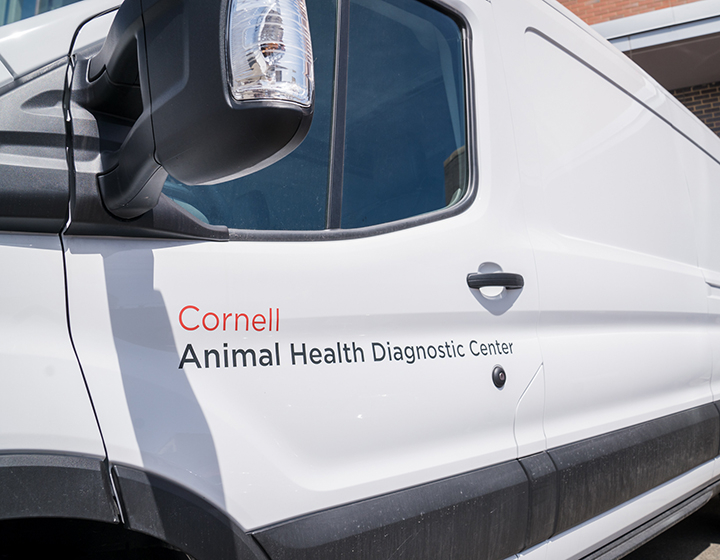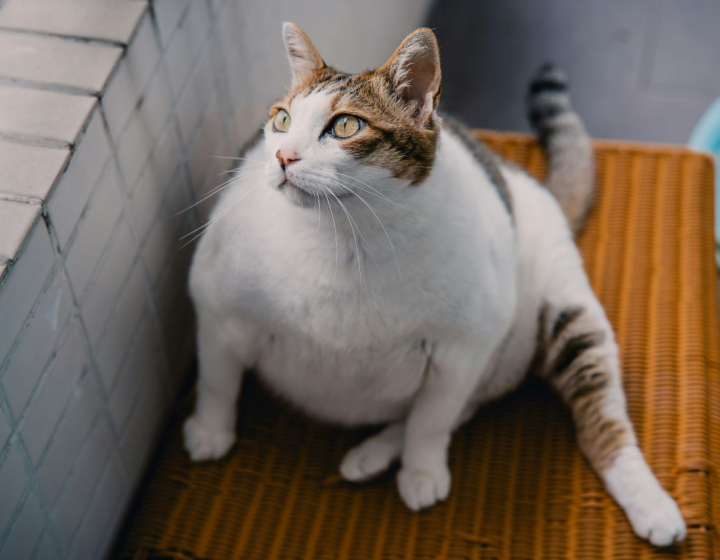Testing cats for highly pathogenic avian influenza (HPAI) H5N1 at the AHDC
Updated February 24, 2025
The current highly pathogenic avian influenza (HPAI) H5N1 outbreak has caused unprecedented mortality in wild and domestic poultry, and illness and death in a variety of mammals, mainly wild carnivores.1 In March 2024, HPAI was detected in dairy cattle, with large amounts of virus shed in milk.2 In November and December 2024, the California Department of Food and Agriculture and the Oregon Department of Agriculture recalled multiple batches of raw milk and raw poultry products that tested positive for HPAI.3–7 There have been reports of HPAI in domestic house cats that had ingested these products. Reported clinical signs of HPAI in cats include anorexia, fever, neurologic signs due to encephalitis, respiratory signs due to pneumonia, and death in some cases. Very high HPAI viral loads in domestic cats have been documented in the brain, and lesser amounts of virus in the lung, liver and gastrointestinal tract have been described in recent literature regarding HPAI in domestic cats.2,8–11 Best practices for sampling from live cats have not been established.10-12
Veterinarians examining neurologic cats and/or cats that have a history compatible with HPAI, including but not limited to cats having ingested raw milk or meat (both poultry and beef), cats that had interaction with dead or sick birds (wild or domestic), or farm cats, can submit samples to the Animal Health Diagnostic Center (AHDC) for HPAI PCR testing.
The best samples from live cats for HPAI PCR testing are not yet known. The Veterinary Support Services veterinarians at the AHDC are recommending all four of the following samples, and will be updated as further information becomes available. Please note these are not in a particular order of preference:
- Oropharyngeal (preferred) or nasal swab from both nares in a plain sterile container such as a red top tube or viral transport media
- EDTA whole blood in a purple top tube
- Urine in a sterile container
- Fecal swab in plain container
The test code for HPAI testing in cats is AIPCR. In the case of deceased cats suspect of HPAI, veterinarians are encouraged to submit the entire carcass for necropsy; please note necropsy charges will apply.
Veterinarians examining cats with respiratory disease may want to submit an oropharyngeal or nasal swab for the feline respiratory PCR panel and virus isolation (test code MDPFRP). This panel includes an Influenza A matrix PCR, which detects all Influenza A Viruses, including all currently recognized feline influenza viruses and H5N1. If the influenza A matrix PCR is positive, please contact the AHDC to pursue further typing of the virus.
Concerns regarding pet food potentially contaminated by HPAI should be reported through the FDA safety reporting portal.
Shelter and community care veterinarians looking for guidance regarding monitoring and response to possible H5N1 infections in cats are advised to check these recommendations.
Veterinarians can contact Veterinary Support Services 607-253-3900 or vetsupport@cornell.edu with questions regarding testing.
References
- HPAI Detections in Mammals. APHIS USDA. Accessed April 4, 2024.
- Caserta LC, Frye EA, Butt SL, et al. Spillover of highly pathogenic avian influenza H5N1 virus to dairy cattle. Nature 2024.
- Morasch Meat Recalls Northwest Naturals Brand 2 Lb Turkey Recipe Raw & Frozen Pet Food—Tested Positive for H5N1 Strain of HPAI Virus. Accessed January 3, 2025.
- Health D of P. California Department of Public Health. Accessed January 3, 2025.
- Positive avian flu bulk-tank tests prompt another raw-milk recall in California. CIDRAP 2024. Accessed January 3, 2025.
- LISTING OF DEPARTMENT OF PUBLIC HEALTH PRESS RELEASES. Accessed December 13, 2024.
- CDFA - Public Affairs - CDFA ANNOUNCES RECALL OF RAW MILK PRODUCED AT “VALLEY MILK SIMPLY BOTTLED” OF STANISLAUS COUNTY. Accessed January 3, 2025.
- Burrough ER, Magstadt DR, Petersen B, et al. Highly Pathogenic Avian Influenza A(H5N1) Clade 2.3.4.4b Virus Infection in Domestic Dairy Cattle and Cats, United States, 2024. Volume 30, Number 7—July 2024. Accessed December 13, 2024.
- Chothe SK, Srinivas S, Misra S, et al. Marked Neurotropism and Potential Adaptation of H5N1 Clade 2.3.4.4.b Virus in Naturally Infected Domestic Cats. Emerging Microbes & Infections 2024; 0:2440498.
- Moore K. Influenza A (Highly Pathogenic Avian Influenza H5N1) in domestic cats. CVMA 2024. Accessed January 3, 2025.
- Sillman SJ, Drozd M, Loy D, et al. Naturally occurring highly pathogenic avian influenza virus H5N1 clade 2.3.4.4b infection in three domestic cats in North America during 2023. Journal of Comparative Pathology 2023;205:17–23.
- Domańska-Blicharz K, Świętoń E, Świątalska A, et al. Outbreak of highly pathogenic avian influenza A(H5N1) clade 2.3.4.4b virus in cats, Poland, June to July 2023. Eurosurveillance 2023;28. Accessed February 16, 2025.





